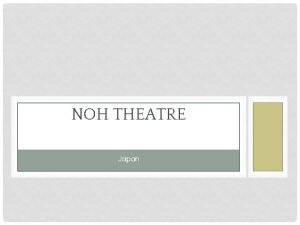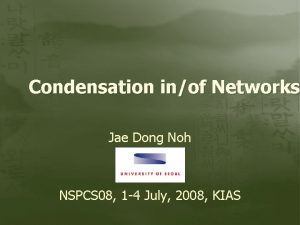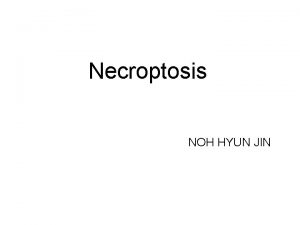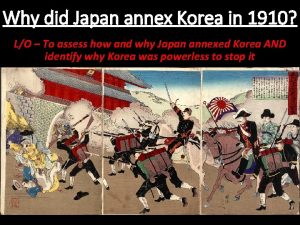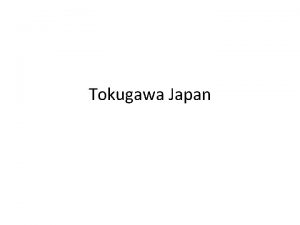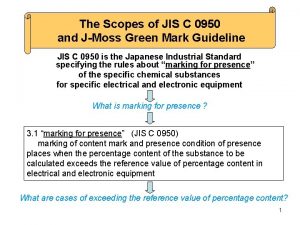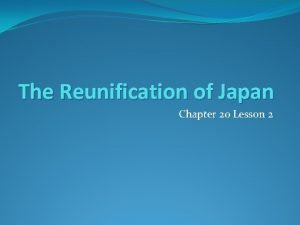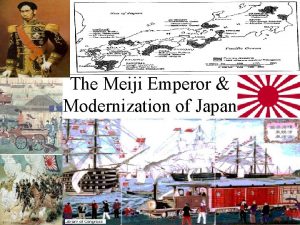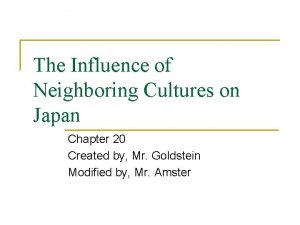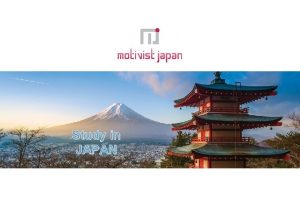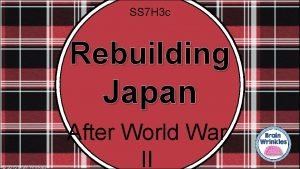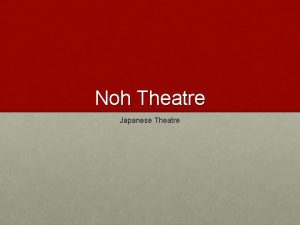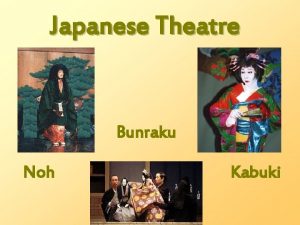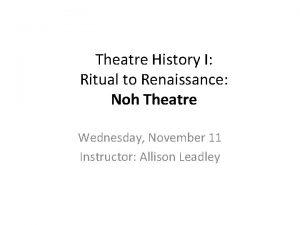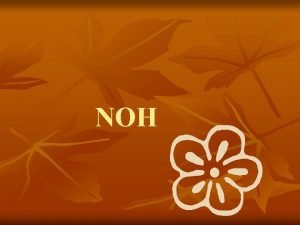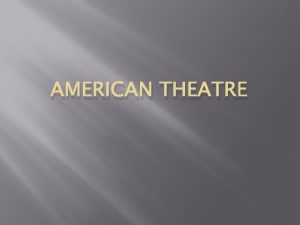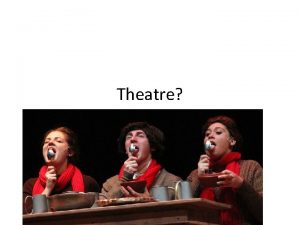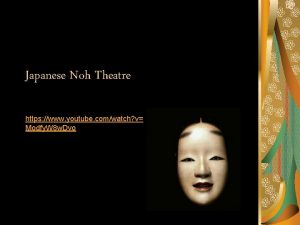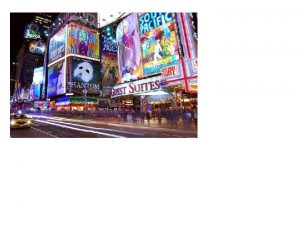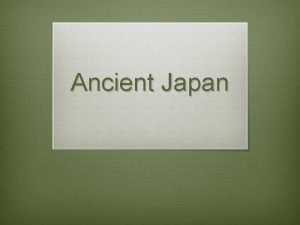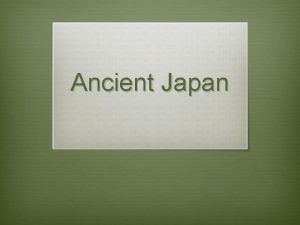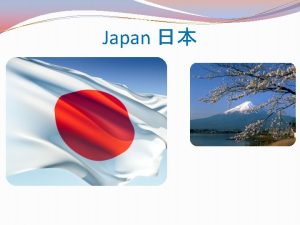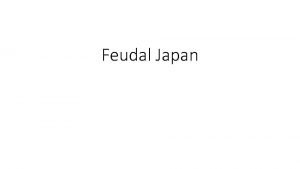NOH THEATRE Japan NOH Noh is a form

















- Slides: 17

NOH THEATRE Japan

NOH • Noh is a form of Japanese theatre, originating in the 14 th Century. The playwright Zeami Motokiyo established Noh by combining theatre with Japanese folk traditions such as the harvest celebrations. • Noh is a combination of speech, song, music and dance. The stories are often based on historical texts and ancient literature, with themes including dreams, ghosts and supernatural events. • Noh is derived from the Japanese word for talent. It is a very traditional form of theatre, and is performed according to many ‘rules’. These include rules for staging, costume, movement, character and Mask. Movement is very stylised and gestures can have symbolic meaning.

THE NOH STAGE • Noh is traditionally performed on a square stage (the hon butai) with four pillars (hashira) supporting a roof. Three sides of the stage are open. Behind the stage is a space called the Ato-Za where the musicians sit. Behind them is the Kgami-ita; a backdrop with an image of a pine tree. SL is an area where the chorus sit (the jiuati-zu) • There is always a bridge or corridor (Hashigokari) which runs off the stage for entrances/exits and additional acting space. This is also decorated with pine trees. • Traditionally a performance lasts all day and consists of five Noh Plays and several shorter Kyogen (comic) pieces. Nowadays it is more usual to show two Noh and one Kyogen play. Performances traditionally took place outdoors although many modern Noh performances use indoor spaces.

THE NOH STAGE

THE NOH STAGE

Noh - the Roles Traditionally, all actors in Noh Theatre are male. There are five main roles in Noh: • The Shite (pronounced Sh’tay!) - the leading character. Might play a spirit, god or supernatural being. • The Waki - the supporting character. Always plays a human character, such as a priest or samurai • The Tsure - can be the Shitetsure (companion of the Shite, or Wakitsure; companion of the Waki) • Hayashi - the musicians. Traditionally three drummers and a flute player. • Jiutai - the chorus. Usually 8 people. Comments on the action, narrates and describes the mood and thoughts of the Shite • Koken - the stage attendants

NOH MASKS (Omote - Face) There were originally around 60 types of Noh Masks, today there are more than 200. Noh actors believe that each Mask has a certain power, and they treat the Masks with absolute respect. The word for the act of putting the Mask on is, ‘kakeru’. The actor ‘becomes’ the Mask and takes on it’s emotions. Masks are worn to show a wide range of characters including young children, elderly women, demons, gods and ghosts. Only the Shite wears a Mask, the Waki is unmasked as he is always playing a human male.

Noh Masks are very light, and are carved from one piece of cypress wood. Holes are cut for the eyes, nose and mouth and then various materials are used to mould the features. Colours are used that are specific to each Mask. Some Noh Masks are very special, as they are designed to show different emotions depending on the way the actor tilts his head. This means that one Mask can sometimes be used to show three different emotions. Noh Masks do not cover the actor’s chin to allow for greater freedom of movement. http: //www. the-noh. com/en/trivia/015. html

Noh Masks

Elder Masks

Onna Masks - Female

Otoko Masks - Male

Kishin Masks - Demons

Onryo Masks - Ghosts and Spirits

Costume Noh costumes are very beautiful, and the audience can tell lots about the character from the colours used. Costumes are divided into 7 sub categories; for more information see http: //www. the-noh. com/en/world/costume. html

Costume

Sources All of the Mask images come from this brilliant website: www. the-noh. com/ Other useful sources include: http: //www 2. ntj. jac. go. jp/unesco/noh/en/noh_maskoldman. html http: //www. japan-guide. com/e/e 2091. html http: //www. prm. ox. ac. uk/nohmasks. html http: //www. kasrl. org/noh_mask. html http: //www. japan-guide. com/e/e 2091. html http: //www. ntj. jac. go. jp/english/schedule/national-noh-theatre. html http: //www. the-noh. com/en/world/
 Japanese noh theatre
Japanese noh theatre Jae dong noh
Jae dong noh Lewis structure for noh
Lewis structure for noh Noh hyungjin
Noh hyungjin Joonki noh
Joonki noh Work4unity in haicantik html
Work4unity in haicantik html Present continuous affirmative negative interrogative
Present continuous affirmative negative interrogative 1931
1931 Japan korea 1910
Japan korea 1910 Water trade japan
Water trade japan Feudal japan dbq
Feudal japan dbq What day did us drop atomic bomb on japan
What day did us drop atomic bomb on japan Jis c 0950
Jis c 0950 Reunification of japan
Reunification of japan Modernization in japan
Modernization in japan The influence of neighboring cultures on japan
The influence of neighboring cultures on japan Human academy japan
Human academy japan Douglas macarthur
Douglas macarthur
